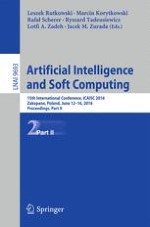The two-volume set LNAI 9692 and LNAI 9693 constitutes the refereed proceedings of the 15th International Conference on Artificial Intelligence and Soft Computing, ICAISC 2016, held in Zakopane, Poland in June 2016.
The 134 revised full papers presented were carefully reviewed and selected from 343 submissions. The papers included in the first volume are organized in the following topical sections: neural networks and their applications; fuzzy systems and their applications; evolutionary algorithms and their applications; agent systems, robotics and control; and pattern classification. The second volume is divided in the following parts: bioinformatics, biometrics and medical applications; data mining; artificial intelligence in modeling and simulation; visual information coding meets machine learning; and various problems of artificial intelligence.
